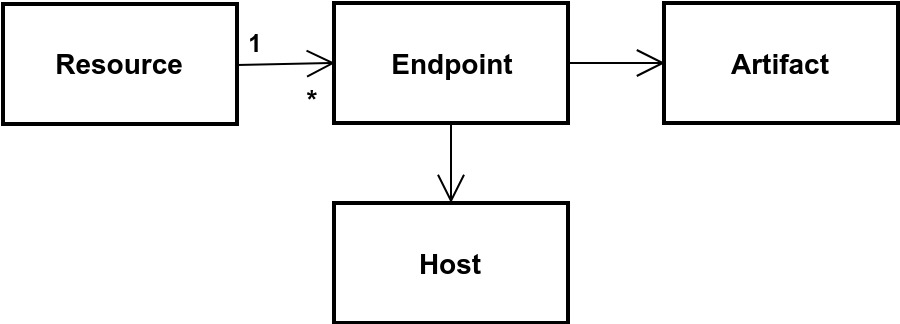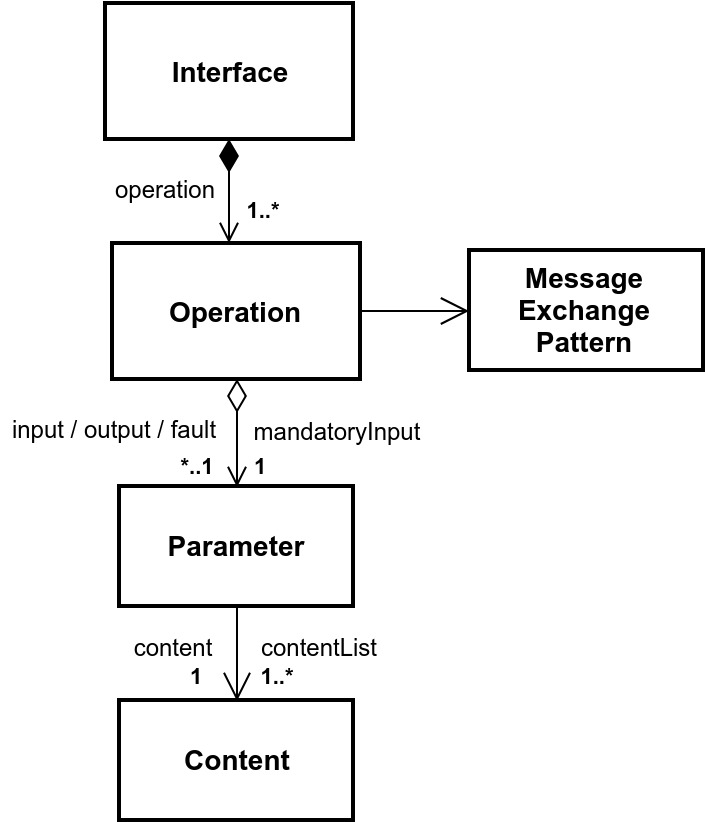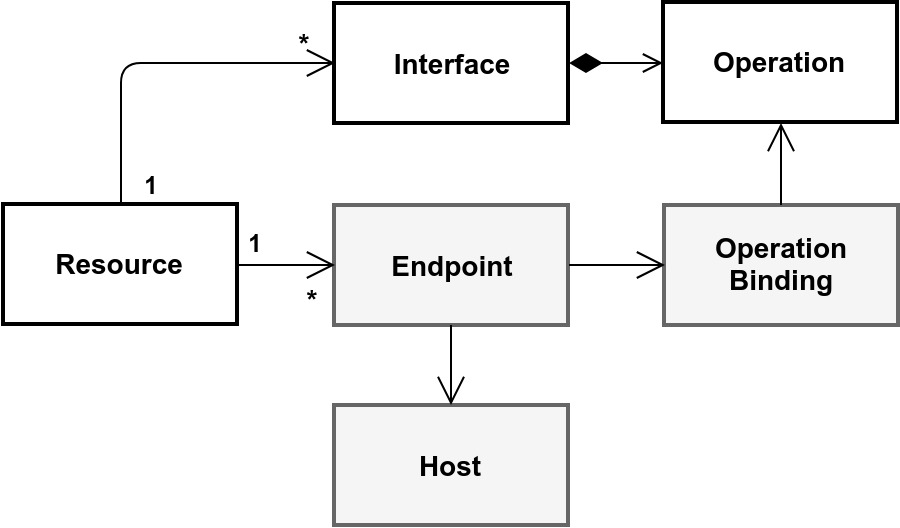Elements of the Communication module allow for describing (non)interactive exchange of digital content and interactions with processing logic (Data Apps). The Endpoint represents an individual point of content exchange. It is defined in terms of underlying communication protocol by its Host and a unique path within the address space of the Host. In the most simple case there is a static Endpoint exposed by a Resource that points to an content Artifact making it available for download.
Interactive communication depend on client input in order to generate the content. Operations(s) are the basic interaction primitives (atomic services). Parameter(s) are named slots defined by an Operation in order to communicate the client input, server output or a fault. The Message Exchange Pattern(MEP) of the Operation governs the order and cardinality of Parameter supply (e.g. ROBUST_IN_ONLY). Related Operations are grouped into Interfaces. Resources define Interfaces in order to make the interactions involved in content exchange explicit and perceivable by the client in an abstract, protocol-agnostic way.
Messages are a means to invoke Operations (InvokeOperationMessage) or mediate content (ArtifactRequest) in an abstract, protocol-agnostic way comparable to SOAP-based communication. They are delivered to and handled by default, conventional handlers of the Connector runtime.
Operation Bindings, on the other side, express how the Operation signature, i.e. the name and its parameters, map to structures of a communication protocol. This task is currently delegated to well-established API description documents (e.g. OpenAPI). A Resource may expose interactive Endpoints that link to such bindings (optional, greyed out part).


